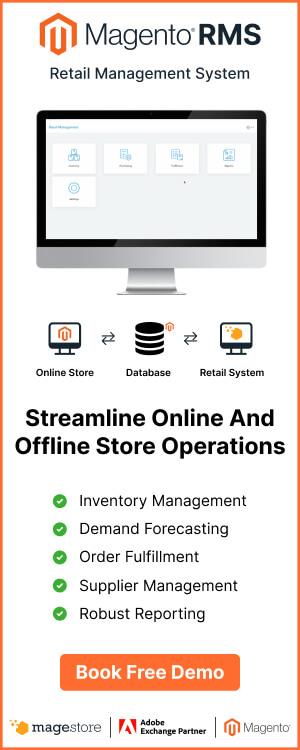Procurement costs are one of the main factors that can affect a company’s profitability. It requires a proper plan for procurement savings to decrease costs, improve supplier management, and add up to the bottom line. There’s a wide range of procurement saving ideas, some simple to implement, others more complicated or time-consuming. Depending on your business needs and scale, here’re 16 procurement cost reduction strategies you can consider for your business.
- 1. Request supplier discounts
- 2. Review contracts to avoid spending leakage
- 3. Consolidate spending
- 4. Review purchasing needs
- 5. Prevent maverick spending
- 6. Evaluate the product life cycle
- 7. Regularly review suppliers
- 8. Provide self-service portals for vendors
- 9. Utilize procurement KPIs
- 10. Establish clear procurement policies
- 11. Review your replacement strategies
- 12. Improve risk management
- 13. Collect and centralize data
- 14. Automate the procurement process
- 15. Integrate procurement systems
- 16. Train your staff and make savings a team effort
- How to reduce procurement costs for Magento businesses
1. Request supplier discounts

Request supplier discount to save procurement costs
Seeking discounts from suppliers is one of the best ways to reduce procurement costs. You can open a negotiation with your suppliers and ask them for discounts in return for early payment or increased order quantity. A small discount percentage can lead to large net savings, especially if the supplier provides your direct materials regularly in a big volume.
Building a close long-term relationship with suppliers also gives you more bargaining power to reach a successful negotiation. If you have a competent long-term supplier, creating a blanket purchase order with them is a good solution among supplier cost reduction strategies. This type of contract allows you to obtain goods or services from a supplier at a fixed price frequently for a particular duration.
2. Review contracts to avoid spending leakage

Review contract to avoid procurement spending leakage
Spending leakage can happen outside the contract terms. You should monitor all purchases to ensure they comply with contract terms, including payment terms. Non-compliant purchases can cause spending leakage; therefore, you should quickly identify and find remedies to prevent them in the future.
If the leakage goes unnoticed, it will keep happening and gradually build up a big cost. Make sure to review contract terms and supervise your purchasing activities, so you can avoid losing money via leakage.
3. Consolidate spending

Consolidate spending on a few selected suppliers
For large companies with substantial procurement needs, consolidating spending on a few suppliers can bring more benefits than spreading your purchasing across many suppliers. Sourcing more products from the same supplier enables economies of scale: The more you spend with 1 vendor, the better chances you can negotiate a discount.
However, you should keep a few alternative suppliers on your list, in case the main supplier encounters problems and cannot deliver goods or services on time. We’ll discuss this later in the upcoming tip.
4. Review purchasing needs

Review purchasing needs before buying
Before deciding to purchase anything, evaluate what’s in your warehouse. If there are unused products, think about how to deal with them. Overstocked inventory is “dead money”, which costs you resources to store and is at risk of being damaged or becoming obsolete.
Make sure you only purchase what you need for both direct and indirect materials. This is helpful to cut down excess inventory costs and storage costs. So next time before you place a new order, review your stock levels and try to use what you already have.
5. Prevent maverick spending

Prevent maverick spending to reduce purchasing costs
Maverick spending is created outside procurement policy, either by unauthorized persons or from non-preferred suppliers. It is an inefficient source of procurement that needs to be tackled. Minimizing maverick spending is one of the best procurement saving ideas you should take into account.
To do so, you need to have a strong procurement policy and make sure everyone follows it. Pay attention to assigning who is authorized to make purchases, ensuring that the procurement department knows their job and responsibility in the purchasing process.
6. Evaluate the product life cycle

Evaluate the product life cycle
Saving costs shouldn’t mean sacrificing quality, you need to consider durability and lifespan as well. If a product is slightly more expensive but can save lots of effort of reparation or replacement, that’s where you can save money.
On the other hand, you may not need the best quality products if you only plan to use them temporarily. Some middle-level products can better balance cost and quality, depending on your purpose to use them.
7. Regularly review suppliers

Review your suppliers regularly
Have a plan to evaluate your suppliers regularly, like an annual or biannual assessment. Check their performance, whether they deliver products with satisfied quality and on schedule at a competitive cost. Add new suppliers or remove suppliers that don’t meet up to your expectation, gradually you’ll have a list of the best vendors that fit your requirements and optimize your spending.
8. Provide self-service portals for vendors

Provide self-service portals for vendors
Create a portal for vendors to manage their own accounts, view transactions, and communicate with your company. It saves time and money for unnecessary back-and-forth communication while ensuring deliveries meet requirements. This is a great method for large corporations to reduce cost in supplier management, especially when they have a long list of vendors.
9. Utilize procurement KPIs

Utilize procurement KPIs to look for cost reduction opportunities
To spot improvement opportunities for your procurement, you need to set up clear procurement KPIs and monitor it closely. The tracking data will give you a better understanding of your procurement performance.
There are various KPIs that can provide valuable insights, such as tracking the number of emergency purchases, or the ROI of the procurement activities.
Setting KPIs and establishing a process of monitoring progress is vital to assessing the department’s overall efficiency and showing you highlighted aspects that need improvement. If implemented properly, this method will contribute significantly to cost savings.
10. Establish clear procurement policies

Establish clear procurement policies
Establishing clear parameters for procurement and purchasing policies is crucial to reducing procurement costs. A comprehensive framework will assure everyone can easily access and follow it. Thus, you can eliminate unnecessary purchasing, while enjoying a smoother supply chain process.
In addition, you should evaluate your procurement practices to see if they’re aligned with your budget and business strategy. For example, have an annual review of your process and see if you should change or improve any aspects.
11. Review your replacement strategies

Review your replacement strategies
How you plan to replace items can affect your bottom line. Routine replacement doesn’t apply to all components. For example, crucial machine parts should be replaced regularly to ensure the machine functions properly, while consumables can be replaced when necessary.
In addition, remember to account for the cost and lead time of waiting for a replacement as well. You don’t want to disrupt your supply chain only to wait for a minor replacement.
12. Improve risk management

Improve risk management
Procurement risk management helps you reduce or avoid risks to your business. Having a complete plan to foresee and tackle risks will better prepare you to handle unexpected events and avoid unplanned costs.
One of the most common risks facing organizations is supplier dependence. If a force majeure happens that makes the supplier unable to deliver goods on time, you should have a few alternative vendors on hand. Thus, make sure you don’t rely too much on a major supplier. Furthermore, pay attention to contract terms and follow up closely with vendors to prevent logistical issues.
13. Collect and centralize data

Collect and centralize data
Collecting accurate data is the first step to understanding your business’ performance. Then, connecting all data from procurement, inventory, and sales teams will give you a complete picture of critical metrics like inventory turnover ratio, inventory carrying cost, lead time, etc.
A centralized database can give you insights on which items you should purchase more or less at which frequency, whether sales and inventory meet up, and whether you should change a supplier. It provides you with real-time reporting and guides you to find cost reduction techniques in procurement.
14. Automate the procurement process

Automate the procurement process
Manual processing can slow down your process and add up to cost drastically. Automation of repetitive tasks can reduce labor costs and free your team to focus on more important jobs. Besides, you can avoid human mistakes in data entry and manual invoice processing, thus eliminating costly errors. While you need to invest in an automation system at the beginning, it will pay off in the long run and save you significantly on time and cost handling manual tasks.
15. Integrate procurement systems

Integrate procurement systems
Automating parts of the procurement system isn’t optimal until you can integrate all those systems, including the inventory system, accounting system, and purchasing system. Connected systems create a full process working smoothly from start to end. It not only helps you cut down labor costs but also helps you avoid mistakes. Thus, the entire supply chain is complete and empowers you to manage all business activities at ease.
16. Train your staff and make savings a team effort

Train your staff on procurement saving ideas
Procurement savings isn’t only about procurement, it’s an organization issue. Educate your employees on the best procurement saving ideas to ensure everyone is on the same page. It involves a team effort to reduce spending, from sustainable procurement practices to business operations. Your team should adopt a mindset of purchasing cost savings and follow the best practices to optimize costs.
How to reduce procurement costs for Magento businesses

Reduce procurement costs for Magento businesses
If you have a company functioning around Magento, Magestore has a complete solution for cost reduction in purchasing: PWA Magento Purchase Order. The platform helps you control all procurement steps and streamline PO management to avoid overbuying and underbuying, automate your process, and efficiently oversee your suppliers’ performance.
With our PWA Purchase Order, you can centralize all data and acquire real-time visibility across systems seamlessly, by syncing data from suppliers, products, inventory, and sales channels for analysis. You will know your stock flow and when to replenish inventory, as well as opportunities to increase profit, while monitoring and building a long-term relationship with suppliers.
In addition, our software frees you from manual tasks and gives you more insights into how to purchase and sell better. You can now prepare POs quickly and track PO execution for product delivery. Simplifying the procurement process brings many benefits to the entire team and helps you save unnecessary expenses while ensuring you have the right products at the right time at the right costs.
Contact Magestore for a free consultation and find out how we can help you improve your procurement.
Related questions
1. Which costs can be considered procurement costs?
Procurement costs refer to the expenses related to goods and services purchased for a company’s supply chain, the cost of managing procurement personnel, and the cost of investing and maintaining procurement software.
2. What are the 6 types of cost savings?
There are 6 types of cost savings that you can apply to your procurement process, including historic saving, budget saving, technical saving, RFB savings, index saving, and ratio saving.
3. Is procurement and purchasing the same?
They may seem similar but actually have different focuses. Purchasing aims to optimize the cost of the order, while procurement attempts to maximize the value creation and total cost of ownership, including risk mitigation, cost savings, supplier relationships, contract compliance, etc.















Your article is very valuable for me. I’m hoping to read more. Thank you for sharing with us.
Your article is very valuable to me. I’m hoping to read more. Thank you.
An interesting article with great deal of useful information. Thanks for sharing.
Nice post. Waiting for your next article.
Very informative and well-articulated post. Thank you
Very informative and well-articulated post. Thank you
Very informative and well-articulated post. Thank you
Nice post. Waiting for your next article
Nice post. Waiting for your next article
Nice post. Waiting for your next article.